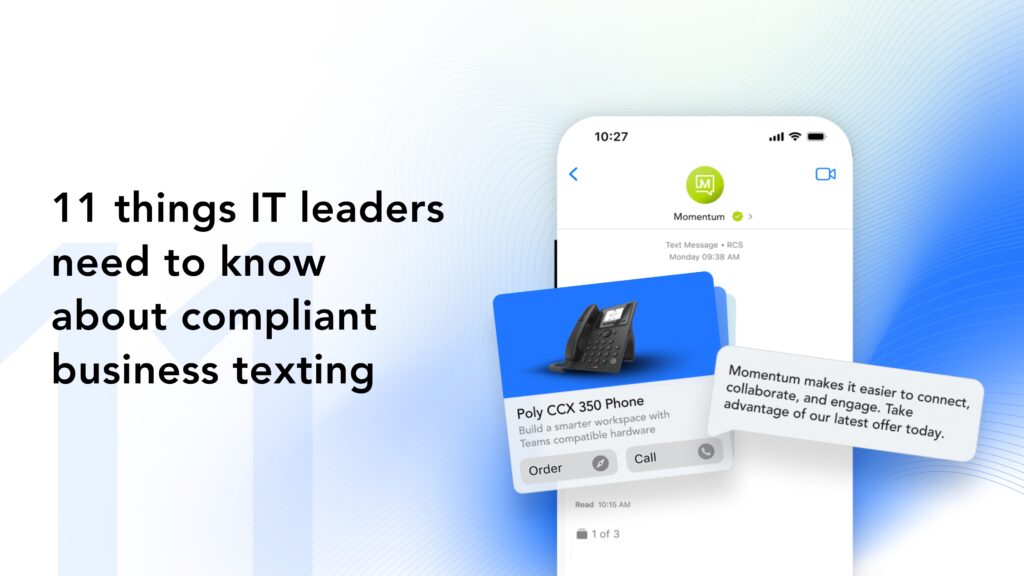1876. That was the year Alexander Graham Bell invented the telephone. Or more accurately, it was the year Bell claimed to have invented it, when in actuality he simply parroted the designs of Antonio Meucci, who dreamed up the first phone 16 years prior.
The technology has gone through a few changes since its inception, with the most notable example arguably being the retirement of manual telephone exchanges and switchboards in favor of automated exchanges and trunks. However, the underlying infrastructure has changed startlingly little. The Plain Old Telephone Service (POTS) as it exists today doesn’t look much different from systems created over a century ago.
The technology has gone through a few changes since its inception, with the most notable example arguably being the retirement of manual telephone exchanges and switchboards in favor of automated exchanges and trunks. However, the underlying infrastructure has changed startlingly little. The Plain Old Telephone Service (POTS) as it exists today doesn’t look much different from systems created over a century ago.
And that’s a problem.
Consider for a moment how much has changed since the late 19th century. How different the world looks today from how it looked 146 years ago. You might feasibly argue that this speaks to the longevity of the POTS — if it isn’t broken, don’t fix it, right?
The problem is that POTS is broken, and has been for quite some time. It lacks modern capabilities such as remote monitoring and management. The capacity of copper wiring to carry broadband signals and deal with traffic congestion is limited, at best.

Perhaps most damning of all, however, is that the aging infrastructure at the core of the POTS has become increasingly difficult and costly to both operate and maintain. Telecommunications firms in the United States have been urging the Federal Communications Commission (FCC) to take action on this issue for years. And in 2015, the FCC finally listened.
The Sunset of Legacy Landlines
We won’t bore you by going into too much detail, but suffice it to say that the FCC in 2016 released a framework to guide businesses through the decommissioning of copper phone systems. Known as the Technology Transitions Order, it was proposed by the agency as a means of guiding “transitions to next-generation communications technologies while protecting the interests of consumers and competition.” This would be followed a few years later by the 2019 release of FCC Order 19-72A1.
That order is the real nail in the coffin for POTS and the Public Switched Telephone Network (PSTN).
Back in August 2022, Order 19-72A1 released carriers from their obligation to cap costs and fees on POTS services. As maintenance costs for copper lines continue to increase, those costs will inevitably be visited onto your business. Modern alternatives like digital subscriber line (DSL) are becoming more prevalent.

Telephone companies are facilitating the transition from POTS to these modern alternatives, offering a range of services that cater to both residential and business users. Particularly now, the days of legacy landlines are numbered.
One estimate places their ultimate extinction as sometime in 2028, just 4 years from now. And don’t make the mistake of thinking that means you have six years to drop your POTS, either. Major carriers have not been shy about their desire to step away from the PSTN, and Order 19-72A1 was actually released at their insistence.
One way or another, your landline will go the way of the dinosaurs. But it’s up to you whether you accept its death and embrace something new, or end up dragged, kicking and screaming, into a modern replacement. If you choose the latter, just be aware that you’ll have to stare down exponentially mounting costs as carriers seek to make up the difference created by falling subscriber counts and aging technology.
The smart choice, as you’ve likely guessed, is the former — and that’s where Momentum comes in.
Understanding Plain Old Telephone Service (POTS)
Plain Old Telephone Service (POTS) is the traditional analog telephone service that has been a cornerstone of communication since the 1880s. This basic telephone call service operates through the Public Switched Telephone Network (PSTN), connecting calls via the phone company. POTS relies on analog lines for analog transmission, utilizing standard frequencies and modulation formats to facilitate voice communication. Despite its age, this old telephone service (POTS) has been remarkably resilient, continuing to serve businesses and households for over a century. However, as technology advances, the limitations of POTS become more apparent, prompting the need for modern alternatives.
History and Basics of POTS
Originally known as “post office telephone service,” POTS began with post office operators manually connecting callers to their destinations. The early infrastructure involved telephone lines suspended from poles, which were later buried underground to improve reliability. Since its inception in the 1880s, POTS has utilized copper wires to transmit voice communication across vast distances, both domestically and internationally. Over time, the system evolved from manual operations to a nearly fully digital and automated network, with communication nodes enabling seamless connections between two points. Despite these advancements, the fundamental principles of this telephone service have remained largely unchanged.
Relationship between POTS and Public Switched Telephone Network (PSTN)
POTS is an integral component of the Public Switched Telephone Network (PSTN), a vast telephone system of interconnected telephone exchanges that link subscribers to central offices. While POTS uses analog transmission with standard frequencies and modulation formats, the PSTN encompasses both analog and digital lines, including Integrated Services Digital Network (ISDN). The PSTN provides a wide array of services beyond basic voice communication, such as data and video transmission. This digital network’s versatility and capacity for various services highlight the contrast between the traditional analog lines of POTS and the more advanced capabilities of the PSTN.
Limitations of POTS
While POTS has been a reliable and widely used telephone service for decades, it comes with several significant limitations that make it less appealing in today’s fast-paced, technology-driven world.
Disadvantages of POTS Lines, Including Reliability and Scalability Issues
POTS lines have several notable disadvantages:
Reliability issues: POTS lines are susceptible to interference and can be adversely affected by weather conditions, leading to service disruptions.
Scalability issues: Expanding a POTS system is challenging, as adding new lines or increasing capacity is not straightforward.
Limited features: Unlike modern systems, POTS lines lack advanced features such as call forwarding, caller ID, and voicemail.
High maintenance costs: Maintaining POTS lines requires regular upkeep, which can be expensive.
Limited bandwidth: The bandwidth of POTS lines is restricted, impacting the quality of voice transmission.
Given these drawbacks, it’s clear that while POTS has served its purpose well, newer technologies like VoIP and digital subscriber lines offer more robust, scalable, and feature-rich alternatives. Transitioning to these modern solutions can help businesses overcome the limitations of POTS and embrace a more efficient and cost-effective communication system.
The Benefits of Digital Solutions for POTS Replacement
As we move further into the digital age, the limitations of Plain Old Telephone Service (POTS) become increasingly apparent. While POTS has been a reliable means of communication for decades, digital solutions have emerged as a superior alternative, offering numerous benefits that make them an attractive option for both individuals and businesses looking to upgrade their communication systems.
Why Digital Solutions Are Superior to Traditional POTS
Digital solutions offer several advantages over traditional POTS, making them a more reliable and efficient choice for modern communication needs:
Increased Reliability: Unlike the old telephone service (POTS), digital solutions are less prone to outages and disruptions. This ensures that your communication remains uninterrupted, even during adverse weather conditions or technical issues.
Improved Call Quality: Digital solutions provide clearer and more stable voice quality, significantly reducing the risk of dropped calls and poor connections. This is a stark contrast to the sometimes crackly and inconsistent quality of POTS lines.
Enhanced Features: Modern digital solutions come with a host of advanced features that traditional POTS simply cannot offer. These include call forwarding, voicemail, video conferencing, and more, all designed to enhance your communication experience.
Cost-Effective: Digital solutions are often more cost-effective than traditional POTS. They typically come with lower monthly fees and eliminate the need for expensive hardware upgrades, making them a more economical choice in the long run.
Scalability: One of the standout benefits of digital solutions is their scalability. Whether you need to scale up or down, digital systems can easily adapt to your changing needs, providing flexibility that POTS cannot match.
Choosing the Right POTS Replacement Solution
With the myriad of digital solutions available today, choosing the right one can be overwhelming. However, by considering a few key factors, individuals and businesses can make an informed decision that best suits their needs.
Factors to Consider When Selecting a Replacement
When evaluating potential POTS replacement solutions, keep the following factors in mind:
Reliability: Ensure that the solution you choose offers high uptime and minimal downtime. Reliable communication is crucial for maintaining business operations and customer satisfaction.
Call Quality: Opt for a solution that provides clear and stable voice quality. This will help avoid the frustrations associated with poor connections and dropped calls.
Features: Consider the features that are important to you. Advanced features like call forwarding, voicemail, and video conferencing can significantly enhance your communication capabilities.
Cost: Evaluate the monthly fees and any additional costs associated with the solution. Look for a cost-effective option that fits within your budget without compromising on quality.
Scalability: Select a solution that can easily be scaled up or down to meet your changing needs. This flexibility is essential for growing businesses or those with fluctuating communication demands.
Embrace Change With Momentum’s Internet Protocol Cloud PBX
We’ve worked in the telecommunications sector for decades. We understand your business’s communication needs. And we understand how essential the POTS currently is to your daily operations.
We can help you replace it with something better, and for a better price.
Take Momentum’s Cloud PBX with Mobility. Flexible, scalable, and feature-rich, it provides you with all the functionality you need to support distributed work and thrive in the digital age. It also greatly outperforms traditional PBX, with a better featureset, greater customizability, and crystal-clear voice quality — all backed by 24/7 US-based customer support and a 99.999% uptime guarantee. Momentum’s Cloud PBX uses internet protocols for voice communication, ensuring seamless and efficient connectivity. This marks a significant evolution in phone calls from traditional POTS to modern VoIP systems, offering enhanced flexibility and cost savings.
Best of all, however, is the fact that it offers all this without expensive hardware and with a transparent per-user pricing model that keeps your costs predictable.
Of course, not every business relies on the POTS solely for voice communication. Faxes are still an essential channel in multiple businesses. That’s why our digital cloud faxing service allows you to securely send and receive faxes via email no matter where you’re located.
That’s just a sampling of what we offer, too. Whatever your business’s communication needs, we’ll work with you to design a purpose-built solution. And we’ll assist you every step of the way as you transition away from your old phone system to ours.
As the old saying goes, all good things must come to an end. The POTS has served the needs of businesses across the country for decades. But its time in the limelight is coming to a close.
It’s time to leave it in the past and accept the future with Momentum.
Momentum’s Expertise in POTS Replacement
Momentum is a leading provider of digital communication solutions, with extensive expertise in POTS replacement. Our team of experts is dedicated to helping individuals and businesses navigate the transition from traditional POTS to modern digital solutions. We offer a range of options, including VoIP, SIP, and cloud-based communication platforms, each designed to meet diverse needs and preferences.
At Momentum, we understand that every business is unique. That’s why we work closely with you to design a purpose-built solution tailored to your specific requirements. From initial consultation to seamless implementation, our team is with you every step of the way, ensuring a smooth and successful transition.
Contact us today to learn more about our POTS replacement solutions and how we can help you embrace the future of communication with confidence.



